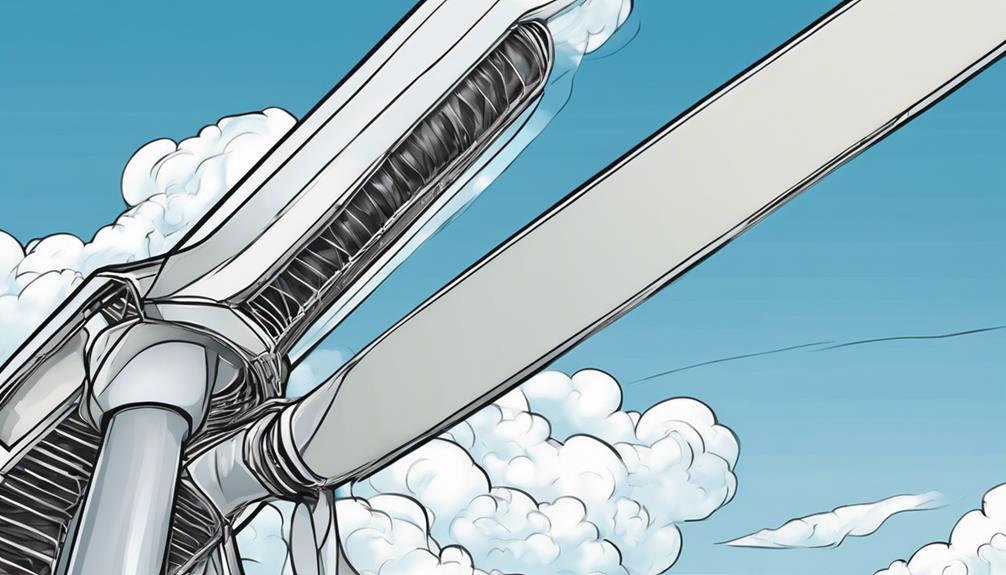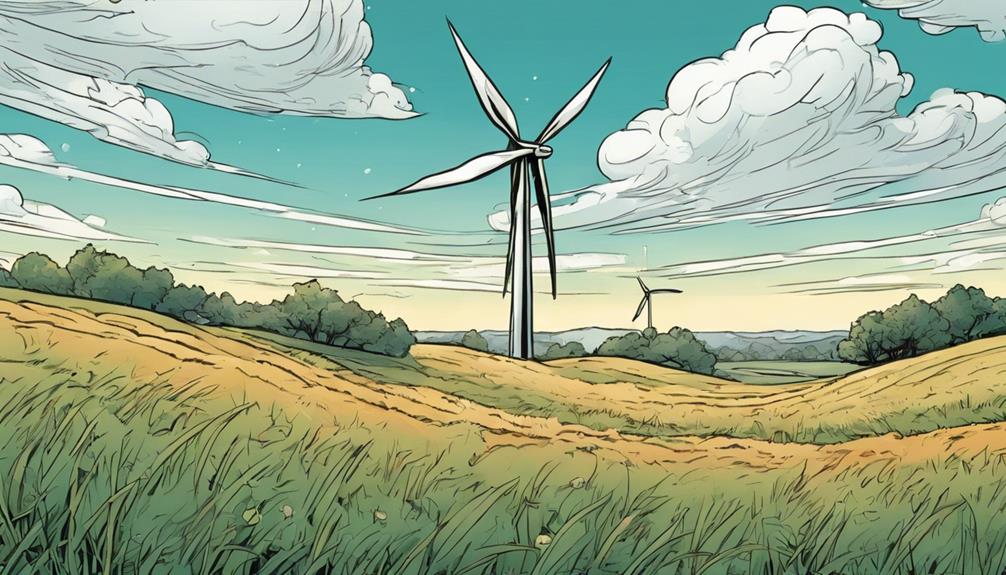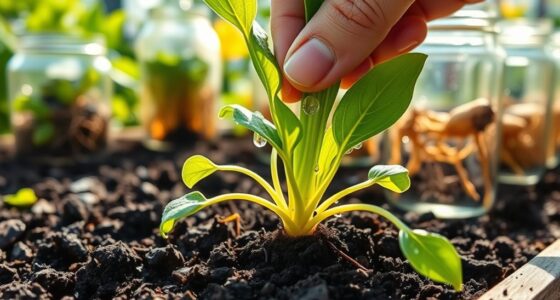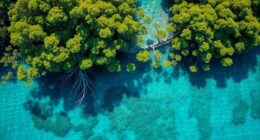When it comes to enhancing wind turbine performance, I've found that the best number and design of blades make all the difference. A single blade can greatly affect power output, stability, and noise levels. Three-blade designs offer high power output and stability, while four-blade designs boost power generation and reduce noise. But it's not just about the number of blades – material selection and aerodynamic efficiency also play a vital role. As I explore the complexities of wind turbine design, I'm discovering that the right combination of blades can reveal maximum energy generation. And there's more to uncover…
Key Takeaways
- Three-blade and four-blade designs offer high power output, stability, and reduced noise levels, making them optimal for wind turbine performance.
- The choice of blade material significantly impacts strength, durability, and cost, with carbon fiber offering exceptional strength-to-weight ratio.
- The optimal number of blades varies with wind speed and direction, with two blades being cost-effective and five blades enhancing power output and reducing noise.
- Environmental factors like temperature, humidity, and wind speed influence material selection, aerodynamic efficiency, and structural strength.
- Blade design optimization, including shape, length, and twist, is crucial to maximize power generation and minimize noise and vibration.
Blade Number Impact on Performance

As I explore the intricacies of wind turbine design, it becomes clear that the number of blades plays a vital role in determining the overall performance of the turbine.
The number of blades significantly affects power output, stability, and noise levels. Three-blade designs offer higher power output and better stability, making them a popular choice.
Four-blade designs, on the other hand, provide increased power generation, reduced noise, and improved stability. Single-blade turbines offer potential efficiency benefits, but require careful maintenance.
Two-blade turbines are cost-effective, but offer moderate power output. Understanding the impact of blade number is crucial in optimizing wind turbine performance and achieving maximum energy production.
Material and Aerodynamic Efficiency

In selecting the best blade material, I must balance the competing demands of strength, durability, and cost, as the right choice can greatly impact aerodynamic efficiency and overall turbine performance.
The material's properties greatly influence the blade's ability to capture wind energy effectively. For instance, fiberglass blades offer a cost-effective solution with moderate strength, carbon fiber blades provide exceptional strength-to-weight ratio but are expensive, and wooden blades offer a sustainable option with natural damping properties.
The aerodynamic efficiency of the blade is also crucial, as it determines how effectively the turbine can harness wind energy. A well-designed blade with ideal shape, length, and twist can significantly enhance power generation.
Optimal Blade Number for Efficiency

I'm considering the best number of blades for my wind turbine, weighing the trade-offs between power output, stability, and cost to maximize efficiency.
Two blades are cost-effective, but they offer moderate power output.
Three blades strike a balance between power and cost, making them a popular choice.
Four blades increase power generation and reduce noise, while five blades can further enhance power and reduce noise.
However, adding more blades beyond five may increase costs and complexity.
The best blade number depends on the specific application, wind conditions, and design priorities.
Environmental Factors and Design

When designing blades, I take into account environmental conditions such as temperature, humidity, and air density, which significantly impact material selection, structural strength, and overall wind turbine performance. These conditions can influence the blade's aerodynamic efficiency, noise levels, and vibration.
For example, high temperatures may decrease the strength of specific materials, while elevated humidity can result in erosion.
- Material selection: I opt for materials capable of withstanding extreme temperatures, humidity, and air density.
- Structural integrity: I confirm that the blade's structure can withstand the demands imposed by environmental conditions.
- Noise and vibration reduction: I craft blades to minimize noise and vibration, especially crucial in urban settings.
Turbine Efficiency in Conditions

Wind speed significantly impacts power generation. Optimizing blade number and design varies greatly with wind speed and direction. For example, in high-wind areas, fewer blades can be more efficient, while in low-wind areas, more blades are needed to capture as much energy as possible.
Different environments require specific blade configurations. Turbine height and blade shapes also influence stability and efficiency. Extensive studies have shown that wind speed has a significant impact on blade efficiency.
In my research, I've found that understanding these factors is essential to maximizing power output and reducing costs. By considering these variables, we can design wind turbines that perform at their best in diverse conditions.
Frequently Asked Questions
What Is the Ideal Blade Shape for Low-Wind Speed Conditions?
"When it comes to low-wind speed conditions, I'd recommend a more curved blade shape to maximize energy capture. This design allows for a larger swept area, increasing torque and efficiency in slower winds."
Can Blade Coatings Improve Wind Turbine Efficiency?
I've found that blade coatings can indeed improve wind turbine efficiency by reducing drag and increasing lift, allowing turbines to capture more energy from the wind, especially in low-wind speed conditions.
How Does Ice Accumulation Affect Wind Turbine Blades?
'I've studied how ice accumulation affects wind turbine blades, and it's evident that it reduces efficiency and increases maintenance needs, making it essential to develop effective ice mitigation strategies to guarantee peak performance.'
Do Larger Turbines Always Generate More Power?
Just like a master chef adds secret ingredients to whip up a culinary storm, I'll break down the myth: larger turbines don't always generate more power. It's not just one-size-fits-all – best blade design, material, and environmental factors play an essential role in power output.
Can Wind Turbines Operate Efficiently in Extreme Temperatures?
'I've found that wind turbines can operate efficiently in extreme temperatures, but blade material selection is essential to minimize noise and vibration, ensuring peak performance in varying environmental conditions.'
What Are Some Ways to Optimize Wind Turbine Blade Performance?
When it comes to optimizing wind turbine blades, there are several key strategies to improve performance. One way is to carefully design the shape and size of the blades to maximize energy capture. Additionally, using advanced materials and coatings can help reduce drag and increase efficiency. Regular maintenance and monitoring are also crucial for ensuring optimal performance.
Conclusion
As I wrap up this whirlwind tour of blade design, I'm left wondering: can we finally ditch those clunky, inefficient turbines and upgrade to some sleek, high-performing blades?
The answer, much like the perfect blade design, remains elusive. But one thing's for sure – with the best blades, we can harness the wind's fury and maybe, just maybe – save the planet from our energy-guzzling ways.










